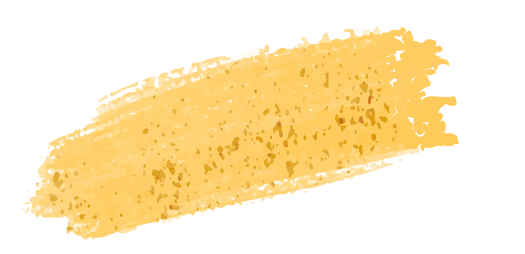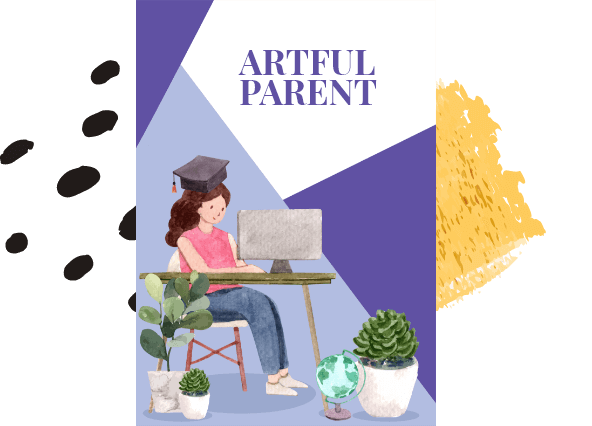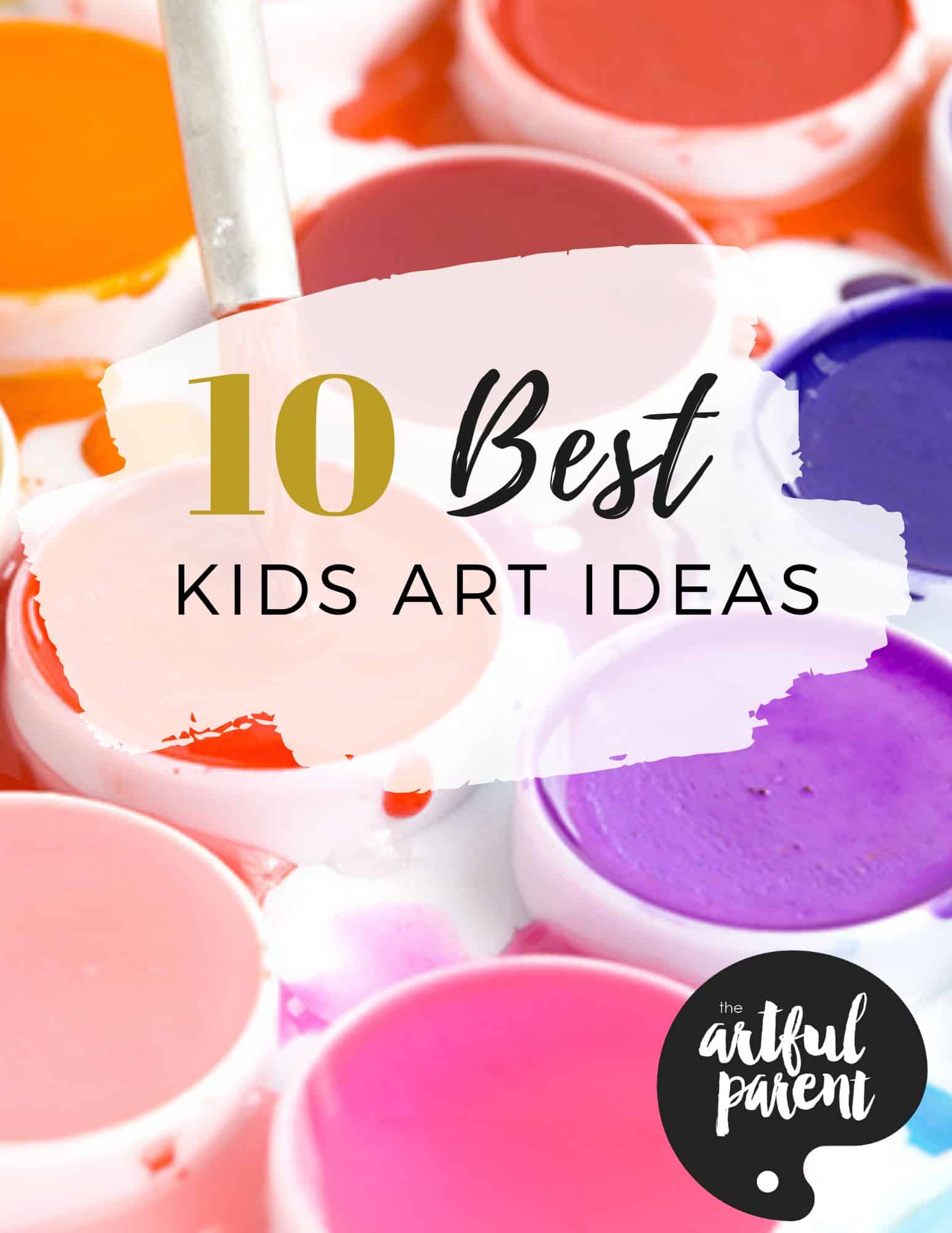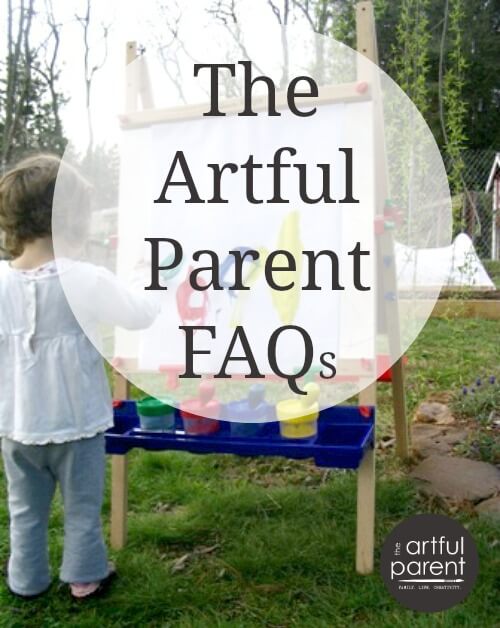
Note: Many of the how-to questions I receive from readers are covered in my book, The Artful Parent, and in past posts on the blog. I have included links to the related blog posts in my answers to the FAQs below.
The hows, whys, and the getting started basics are exactly what my first book, The Artful Parent, is all about. It also includes many great art activities. (My second book, The Artful Year, on the other hand, is an activity book, arranged by the four seasons of the year.) Both books include easy recipes, recommended children’s books, and lists of art supplies and where to get them.
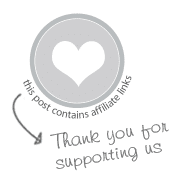
The Artful Parent Frequently Asked Questions
Absolutely! I simply ask that you also cite the blog name, The Artful Parent, when you link to it. Thank you for your interest!
Kindly ask for permission before using any of my pictures or content. You can contact my team at [email protected]. Thank you!
I currently use a Canon Rebel T2i for most of my photography but also take quite a few photos with my iPhone 6.
You can find my books at your local bookstore or online at Amazon, Barnes & Noble, Powell’s, or from my publisher, Roost Books
Many places. I love to brainstorm ideas myself but am also inspired by ideas I find on Pinterest, in books, from friends, or on other blogs. My kids often suggest their own as well.
Some of my favorite books over the years have been :: Scribble Art and First Art by MaryAnn Kohl, Young at Art by Susan Striker, Tinkerlab by Rachelle Doorley, The Guerilla Art Kit by Keri Smith, Making Things by Ann Wiseman, and Drawing with Children by Mona Brookes.
I invite you to check out my Parents’ Corner. There are some helpful discussions on getting started as an artful parent, creativity, how to talk to kids about their art, and more. The bottom line is this: even if you didn’t have the access and encouragement you needed to be artful growing up, you have the ability to offer this to your own children. We can all be artful, regardless of the skills we think we do or do not have. My book, The Artful Parent, includes a lengthy discussion on this topic as well.
I am a busy parent just like you. Making art is just something I’ve prioritized from day one. We considered homeschooling, but decided that sending our kids to public school was best for all of us for now. We work art into many parts of our days—waking up, winding down, transitions of all sorts, play dates, family time, alone time, as a natural application of reading books together, etc. Some days find us making more art than other days, and that’s okay. And there are many quality activities that you might be doing with your kids that I’m not doing…and that’s okay too.
I would invite you to read through some of my posts on encouraging creativity, such as ::
19 Ways to Foster Your Kids’ Creativity
How to Encourage Drawing Skills, Confidence, and Creativity in Young Children
5 Ways to Encourage Your Kids’ Creativity Today
Also, know that it is very normal for kids, especially younger ones, to make art in short bursts of time. This still happens in my older daughter as well, and there are a lot of factors to consider, including temperament, what’s going on around them, energy level, and interest in the project itself. I’ve also found that offering sensory-rich experiences (such as water beads or shaving cream play) may engage even a very young child for quite a long time.
The important thing to remember is to keep giving them opportunities for art. (Each of the above topics is covered in The Artful Parent book.)
Things to Do and Places to Go with Kids
North Carolina Arboretum (trails, streams, rotating science/art/culture exhibits, gardens, etc.)
Botanical Gardens (short hike, gardens, and creek exploration)
Western North Carolina Nature Center (local animals and petting zoo)
Hickory Nut Gap Farm (farm just outside of Asheville with a rope spider-web, giant trikes to ride, farm animals, an incredible farm store, and a really lovely stream to splash in)
Robert Lake Park (a one-of-a-kind playground that is built around a series of creeks in Montreat, NC)
Driving and hiking along the Blue Ridge Parkway (Craggy Peak is a short but awesome family-friendly hike)
Beaver Lake Bird Sanctuary (short walk, birds to watch, turtles to see in the lake, great trees to climb, etc.)
Asheville Museum of Science (small but fun)
Carrier Park (generously sized multi-aged playground, rink for roller skating, miles of paths for skating and bike riding, etc.)
Climbmax (indoor climbing walls)
Grove Park Inn (for great views in town and gingerbread house displays in December)
The Toy Box (family-owned and -run toy store)
Bungee jumping at the Asheville mall
The Biltmore Estate (we usually bypass the fancy house tours and explore the farm and gardens)
Family-Friendly Places to Eat
Creperie Bouchon (yummy gluten-free crepes and a great outdoor eating area)
The W.A.L.K. (if you go to WALK, be sure to wander behind the restaurant and check out Christopher Mello’s Garden)
Asheville Pizza & Brewing Co. (the one on Merrimon Avenue shows inexpensive kids’ movies in the afternoon)
The Hop (local ice cream shops)
Hole (local doughnut shop)
Dobra Tea (a tea shop with cushions to sit on and low tables; my kids love it)
The Pisgah Inn (20 minute drive down the Parkway from Asheville, beautiful views from the restaurant)
Well, I have always been into art. My sister and I drew and painted a lot as children, my grandma is an artist, and many of my other relatives have also been involved in the arts. Art was just always there for me to some degree.
In college, I followed my interests and then worked in the art field after graduating. However, it wasn’t until I had my first child that I even considered art or creativity from a parent/child perspective. All of a sudden, I realized what an important role I had in shaping the world of this small being! Besides all of the normal things new parents think about—diapers, breastfeeding, food, play, education, etc—I also considered art.
I wanted to raise my child in an art-rich environment, to share my love of art with her, and to help her be in touch with her creative self as much as possible. That wish has guided my actions from day one, and it has influenced the books I’ve read, the activities we’ve done, the toddler art group I started, and the toys I brought into our house.
What I want for my own children—art, creativity, and the freedom and encouragement to explore—is something I want for all children. So I do my best to motivate and inspire parents, teachers, and caregivers to do more art with the kids in their lives and to encourage their creativity on a daily basis.
There are lots of great resources out there now for beginning bloggers! I suggest starting with Amy Lynn Andrews’ step-by-step guide to starting a blog.
Check out some of my posts on art display and storage such as ::
Organizing and Storing Children’s Art
21 Ways to Display Kids Artwork
I also have a couple of chapters on this subject in my book, The Artful Parent.
Yes! Providing or organizing a special space for art is a big help and what I usually recommend first. How I Plan Our Art Activities is a great place to start. I also have a weekly planning calendar that you can download for free to help with making space for art; I truly believe that it is worth planning for! Also helpful might be my posts on children’s art spaces such as 6 Simple Ways to Making a Creativity-Inspiring Space and How to Create a Kids’ Art Space that will Get Used, and my book, The Artful Parent.
Once you incorporate art activities into your life a few times, it gets easier! And I would also add that it helps when I lower my expectations of a clean and put-together house.
Yes! Absolutely! Drawing, painting, collaging, and sculpting can often be done with the most basic of art materials.
Start with this post :: Kids Art on a Budget.
And there are so many art materials you can make. These 35 Homemade Art Materials are just some of what can be made inexpensively.
Using found objects and recycle-bin materials is another creative way to stretch your art budget. See my post on 20 Art Projects Kids Can Make from a Cardboard Box.
I also talk about the subject of art-on-a-budget, as well as what materials you actually need (not much!) and don’t need in my book, The Artful Parent.
You can subscribe to The Artful Parent here. You’ll receive a weekly letter from me each Friday with creative ideas to inspire you.
Yes to all three! While I keep in mind caring for our planet (using nontoxic materials and sending less stuff to the landfill), I recognize that organic and more natural materials are often more expensive. I use these when I am able, but I would rather do art than not do art, so I often encourage parents to use more readily available and cheaper materials. We use recyclables but also purchase new supplies (such as paper and markers) and use those as well. My main hope is for my kids to keep making art, so I try to let supplies be an avenue for this to happen, not something that stops us.
Also, if you would like more natural art supplies but don’t have the budget for them, consider making them yourself. Many homemade art materials are easy and inexpensive to make with materials you already have in your kitchen. Get your kids involved. They often enjoy making the supplies as much as using them!
Have a question that wasn’t answered here? Send me an e-mail at [email protected].
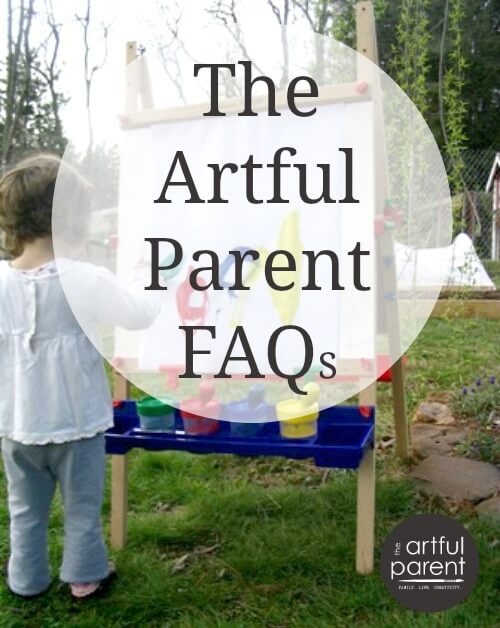
Note: Many of the how-to questions I receive from readers are covered in my book, The Artful Parent, and in past posts on the blog. I have included links to the related blog posts in my answers to the FAQs below.
The hows, whys, and the getting started basics are exactly what my first book, The Artful Parent, is all about. It also includes many great art activities. (My second book, The Artful Year, on the other hand, is an activity book, arranged by the four seasons of the year.) Both books include easy recipes, recommended children’s books, and lists of art supplies and where to get them.
The Artful Parent Frequently Asked Questions
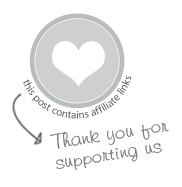
Absolutely! I simply ask that you also cite the blog name, The Artful Parent, when you link to it. Thank you for your interest!
Q :: May I copy your pictures and content in my publication?
Kindly ask for permission before using any of my pictures or content. You can contact my team at [email protected]. Thank you!
Q :: What kind of camera do you use?
I currently use a Canon Rebel T2i for most of my photography but also take quite a few photos with my iPhone 6.
Q :: Where can I buy your books The Artful Parent and The Artful Year?
You can find my books at your local bookstore or online at Amazon, Barnes & Noble, Powell’s, or from my publisher, Roost Books.
Q :: Where do you get your ideas for your art projects?
Many places. I love to brainstorm ideas myself but am also inspired by ideas I find on Pinterest, in books, from friends, or on other blogs. My kids often suggest their own as well.
Some of my favorite books over the years have been :: Scribble Art and First Art by MaryAnn Kohl, Young at Art by Susan Striker, Tinkerlab by Rachelle Doorley, The Guerilla Art Kit by Keri Smith, Making Things by Ann Wiseman, and Drawing with Children by Mona Brookes.
Q :: I want to be an artful parent but I’m not artistic. What do I need to keep in mind and how do I get started?
I invite you to check out my Parents’ Corner. There are some helpful discussions on getting started as an artful parent, creativity, how to talk to kids about their art, and more. The bottom line is this: even if you didn’t have the access and encouragement you needed to be artful growing up, you have the ability to offer this to your own children. We can all be artful, regardless of the skills we think we do or do not have. My book, The Artful Parent, includes a lengthy discussion on this topic as well.
Q :: You seem to have a lot of time to do art with your kids. How do you find the time? Do you homeschool?
I am a busy parent just like you. Making art is just something I’ve prioritized from day one. We considered homeschooling, but decided that sending our kids to public school was best for all of us for now. We work art into many parts of our days—waking up, winding down, transitions of all sorts, play dates, family time, alone time, as a natural application of reading books together, etc. Some days find us making more art than other days, and that’s okay. And there are many quality activities that you might be doing with your kids that I’m not doing…and that’s okay too. 🙂
Q :: We don’t make much art because my kids don’t like it or are only interested for a short time. Do you have any suggestions?
I would invite you to read through some of my posts on encouraging creativity, such as ::
19 Ways to Foster Your Kids’ Creativity
How to Encourage Drawing Skills, Confidence, and Creativity in Young Children
5 Ways to Encourage Your Kids’ Creativity Today
Also, know that it is very normal for kids, especially younger ones, to make art in short bursts of time. This still happens in my older daughter as well, and there are a lot of factors to consider, including temperament, what’s going on around them, energy level, and interest in the project itself. I’ve also found that offering sensory-rich experiences (such as water beads or shaving cream play) may engage even a very young child for quite a long time.
The important thing to remember is to keep giving them opportunities for art. (Each of the above topics is covered in The Artful Parent book.)
Q :: What are your favorite family-friendly things to do in Asheville, North Carolina?
Things to Do and Places to Go with Kids
North Carolina Arboretum (trails, streams, rotating science/art/culture exhibits, gardens, etc.)
Botanical Gardens (short hike, gardens, and creek exploration)
Western North Carolina Nature Center (local animals and petting zoo)
Hickory Nut Gap Farm (farm just outside of Asheville with a rope spider-web, giant trikes to ride, farm animals, an incredible farm store, and a really lovely stream to splash in)
Robert Lake Park (a one-of-a-kind playground that is built around a series of creeks in Montreat, NC)
Driving and hiking along the Blue Ridge Parkway (Craggy Peak is a short but awesome family-friendly hike)
Beaver Lake Bird Sanctuary (short walk, birds to watch, turtles to see in the lake, great trees to climb, etc.)
Asheville Museum of Science (small but fun)
Carrier Park (generously sized multi-aged playground, rink for roller skating, miles of paths for skating and bike riding, etc.)
Climbmax (indoor climbing walls)
Grove Park Inn (for great views in town and gingerbread house displays in December)
The Toy Box (family-owned and -run toy store)
Bungee jumping at the Asheville mall
The Biltmore Estate (we usually bypass the fancy house tours and explore the farm and gardens)
Family-Friendly Places to Eat
Creperie Bouchon (yummy gluten-free crepes and a great outdoor eating area)
The Double Decker Bus
Doc Chey’s Noodle House
The W.A.L.K. (if you go to WALK, be sure to wander behind the restaurant and check out Christopher Mello’s Garden)
Asheville Pizza & Brewing Co. (the one on Merrimon Avenue shows inexpensive kids’ movies in the afternoon)
The Hop (local ice cream shops)
Hole (local doughnut shop)
Dobra Tea (a tea shop with cushions to sit on and low tables; my kids love it)
The Pisgah Inn (20 minute drive down the Parkway from Asheville, beautiful views from the restaurant)
Q :: How did you enter into parenthood with such vision for art-making as a family?
Well, I have always been into art. My sister and I drew and painted a lot as children, my grandma is an artist, and many of my other relatives have also been involved in the arts. Art was just always there for me to some degree.
In college, I followed my interests and then worked in the art field after graduating. However, it wasn’t until I had my first child that I even considered art or creativity from a parent/child perspective. All of a sudden, I realized what an important role I had in shaping the world of this small being! Besides all of the normal things new parents think about—diapers, breastfeeding, food, play, education, etc—I also considered art.
I wanted to raise my child in an art-rich environment, to share my love of art with her, and to help her be in touch with her creative self as much as possible. That wish has guided my actions from day one, and it has influenced the books I’ve read, the activities we’ve done, the toddler art group I started, and the toys I brought into our house.
What I want for my own children—art, creativity, and the freedom and encouragement to explore—is something I want for all children. So I do my best to motivate and inspire parents, teachers, and caregivers to do more art with the kids in their lives and to encourage their creativity on a daily basis.
Q :: I want to start a blog. How do I start? Do you have any resources?
There are lots of great resources out there now for beginning bloggers! I suggest starting with Amy Lynn Andrews’ step-by-step guide to starting a blog.
Q :: What do you do with all the art your kids make?
Check out some of my posts on art display and storage such as ::
Organizing and Storing Children’s Art
21 Ways to Display Kids Artwork
I also have a couple of chapters on this subject in my book, The Artful Parent.
Q :: I get overwhelmed at the thought of kids making art because of all the preparation beforehand and the mess to clean up afterward. Do you have any thoughts or tips?
Yes! Providing or organizing a special space for art is a big help and what I usually recommend first. How I Plan Our Art Activities is a great place to start. I also have a weekly planning calendar that you can download for free to help with making space for art; I truly believe that it is worth planning for! Also helpful might be my posts on children’s art spaces such as 6 Simple Ways to Making a Creativity-Inspiring Space and How to Create a Kids’ Art Space that will Get Used, and my book, The Artful Parent.
Once you incorporate art activities into your life a few times, it gets easier! And I would also add that it helps when I lower my expectations of a clean and put-together house.
Q :: I’d love to give art opportunities to my children, but I don’t have a lot of money to buy art materials. You seem to have so many. Is it possible to do art with few resources?
Yes! Absolutely! Drawing, painting, collaging, and sculpting can often be done with the most basic of art materials.
Start with this post :: Kids Art on a Budget.
And there are so many art materials you can make. These 35 Homemade Art Materials are just some of what can be made inexpensively.
Using found objects and recycle-bin materials is another creative way to stretch your art budget. See my post on 20 Art Projects Kids Can Make from a Cardboard Box.
I also talk about the subject of art-on-a-budget, as well as what materials you actually need (not much!) and don’t need in my book, The Artful Parent.
Q :: How do I sign up for your newsletter?
You can subscribe to The Artful Parent here. You’ll receive a weekly letter from me each Friday with creative ideas to inspire you.
Q :: Which is better—organic art supplies, recyclables, or traditional (non-organic) art supplies?
Yes to all three! While I keep in mind caring for our planet (using nontoxic materials and sending less stuff to the landfill), I recognize that organic and more natural materials are often more expensive. I use these when I am able, but I would rather do art than not do art, so I often encourage parents to use more readily available and cheaper materials. We use recyclables but also purchase new supplies (such as paper and markers) and use those as well. My main hope is for my kids to keep making art, so I try to let supplies be an avenue for this to happen, not something that stops us.
Also, if you would like more natural art supplies but don’t have the budget for them, consider making them yourself. Many homemade art materials are easy and inexpensive to make with materials you already have in your kitchen. Get your kids involved. They often enjoy making the supplies as much as using them!
Have a question that wasn’t answered here? Send me an e-mail at [email protected].

